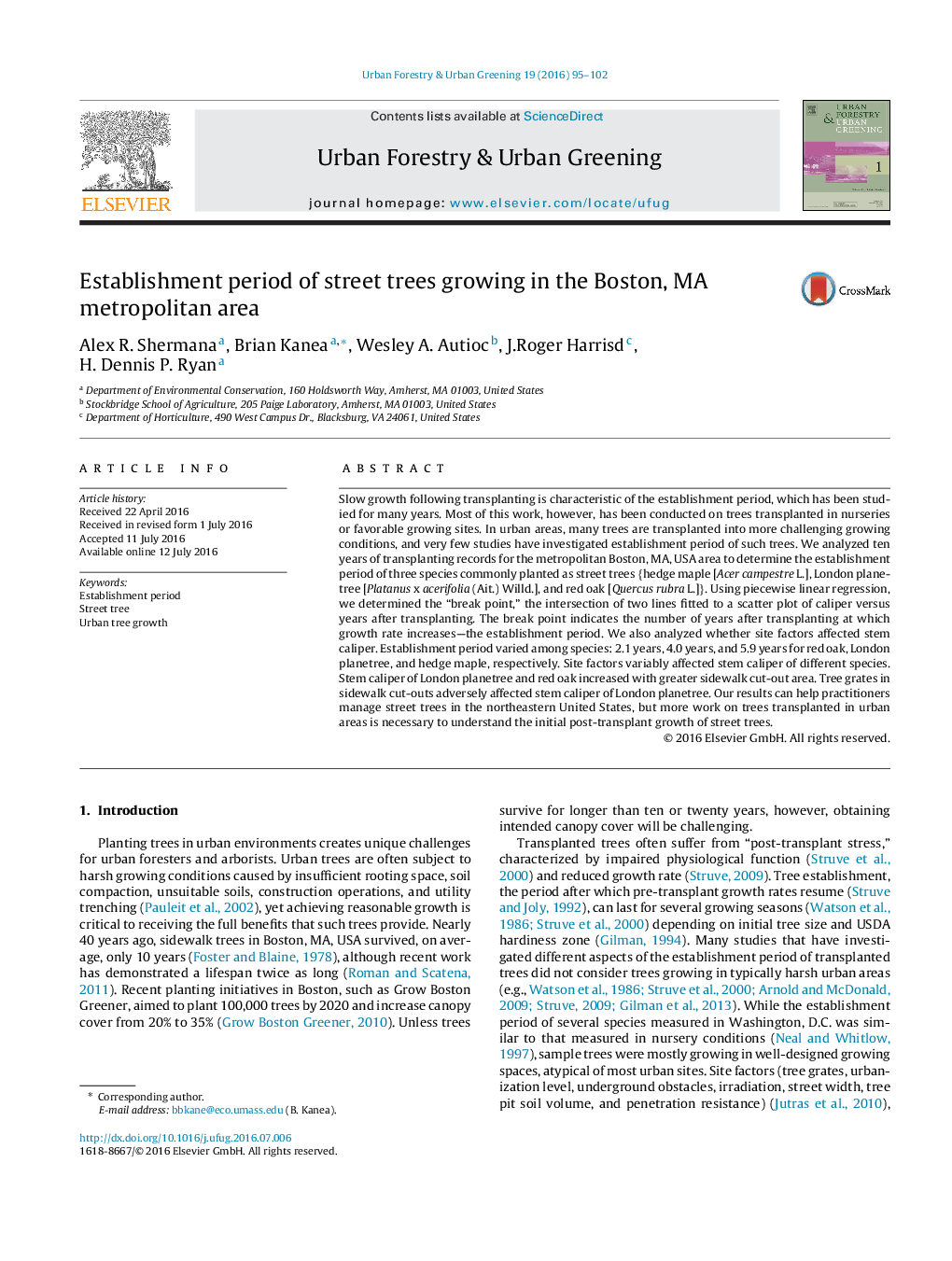| Article ID | Journal | Published Year | Pages | File Type |
|---|---|---|---|---|
| 93919 | Urban Forestry & Urban Greening | 2016 | 8 Pages |
Slow growth following transplanting is characteristic of the establishment period, which has been studied for many years. Most of this work, however, has been conducted on trees transplanted in nurseries or favorable growing sites. In urban areas, many trees are transplanted into more challenging growing conditions, and very few studies have investigated establishment period of such trees. We analyzed ten years of transplanting records for the metropolitan Boston, MA, USA area to determine the establishment period of three species commonly planted as street trees {hedge maple [Acer campestre L.], London planetree [Platanus x acerifolia (Ait.) Willd.], and red oak [Quercus rubra L.]}. Using piecewise linear regression, we determined the “break point,” the intersection of two lines fitted to a scatter plot of caliper versus years after transplanting. The break point indicates the number of years after transplanting at which growth rate increases—the establishment period. We also analyzed whether site factors affected stem caliper. Establishment period varied among species: 2.1 years, 4.0 years, and 5.9 years for red oak, London planetree, and hedge maple, respectively. Site factors variably affected stem caliper of different species. Stem caliper of London planetree and red oak increased with greater sidewalk cut-out area. Tree grates in sidewalk cut-outs adversely affected stem caliper of London planetree. Our results can help practitioners manage street trees in the northeastern United States, but more work on trees transplanted in urban areas is necessary to understand the initial post-transplant growth of street trees.
